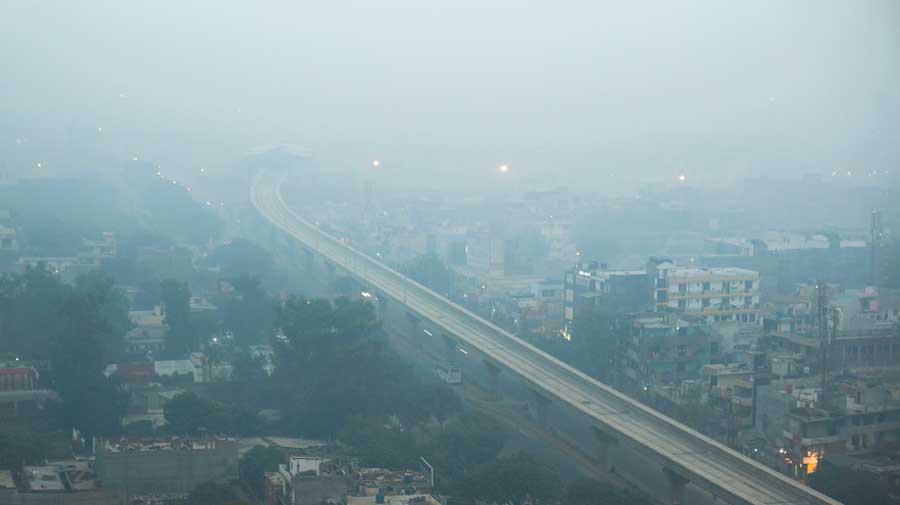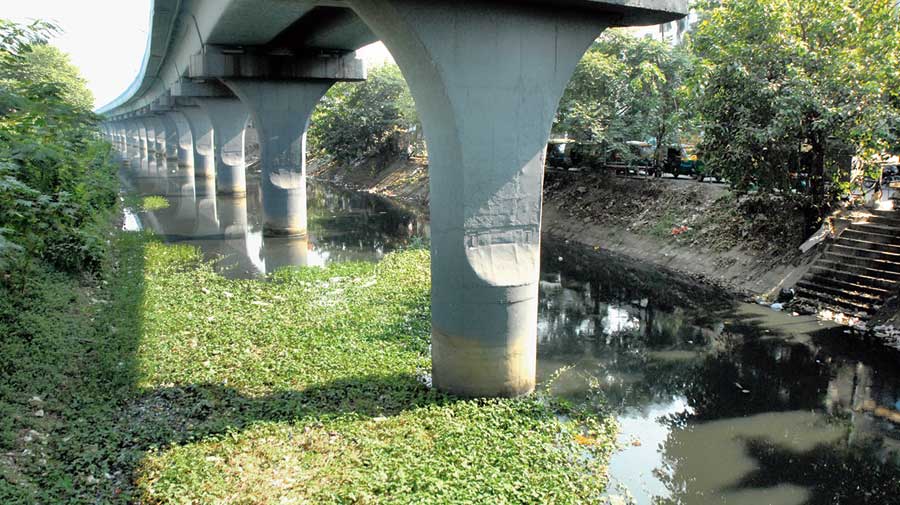The air quality touched ‘severe’ levels at the monitoring station in the Victoria Memorial and was ‘very poor’ at six other stations in Kolkata between Tuesday evening and Wednesday morning, the National Air Quality Index showed.
The sub-index value of PM2.5, fine particulates that can cause a host of critical ailments, shot up to 406 around 2am on November 24, which falls under the ‘severe’ category.
According to the Index, severe air “affects healthy people and seriously impacts those with existing diseases”.
The ‘very poor’ air quality was recorded at the Ballygunge, Jadavpur, Bidhannagar, Rabindra Sarobar, Fort William and Rabindra Bharati University (BT Road) stations. ‘Very poor’ air can cause ‘respiratory illness on prolonged exposure’, according to the Index.
PM2.5 was the main contributor to the surge in pollution recorded at all stations, barring Fort William, between 1am and 3am. At the Fort William station, PM10 was the dominant pollutant and the peak was reached around 8pm on November 23.
Air quality experts said a graded response action plan (GRAP) prepared by the West Bengal Pollution Control Board, and announced on Wednesday, would be inadequate in containing such a sharp rise in air pollution.
The 10-point plan includes reducing the number of heavy goods vehicles by 50 per cent, ensuring proper disposal of solid waste and enforcing the ban on burning of biomass and solid waste.
A study by the National Environmental Engineering Research Institute (NEERI) in 2019 showed that vehicles contributed 25 per cent of the PM2.5 pollution in Kolkata during winter. The study also showed that heavy goods vehicles accounted for 49.5 per cent of the transport sector's contribution to PM2.5 pollution.
Mayor Firhad Hakim had met traders, transporters' bodies and labour unions from the Posta, Mechhua and Burrabazar markets in July and spoke about possible locations on the fringes of Kolkata where they could be shifted. The aim was to reduce the entry of heavy goods vehicles into the city.
A trader at Posta said there had been no progress on the proposed move.
PM2.5 particulates are 2.5 micron or less in size. They are so tiny that they can enter the deepest crevices of the lungs and trigger a number of serious diseases.
Doctors have said PM2.5 can impact any human organ. It can go into the terminals of the lungs and get mixed with the blood. Once that happens, PM2.5 can reach any organ. Long-term exposure to PM2.5 can cause lung cancer and chronic obstructive pulmonary disorder.
The GRAP announced on Wednesday is neither graded nor in tune with the forecasting-based GRAP model being implemented in Delhi, environmentalists said.
Air pollution expert Anumita Roy Choudhury from the Centre for Science and Environment pointed out that GRAP needed to be in tune with the pollution level — the higher the pollution level, the more stringent and restrictive the plan has to be.
“The current strategy in Bengal is focussed on enforcement of regular measures, but GRAP requires graded and progressive interventions, including stringent actions and restrictive measures, as air quality worsens from poor to very poor and beyond,” Roy Choudhury said.
“Since July 2022, Delhi has been following a three-day forecasting-based GRAP,” said Gufran Beig, programme director of the System of Air Quality Forecasting and Research (SAFAR).
SAFAR is a national network of air quality and weather monitoring stations set up under the Indian Institute of Tropical Meteorology, a government institute.
Bengal does not have an air pollution forecasting system.
“We have announced an initial plan and will definitely update according to the requirement," state environment minister Manas Bhuniya said on Thursday.



